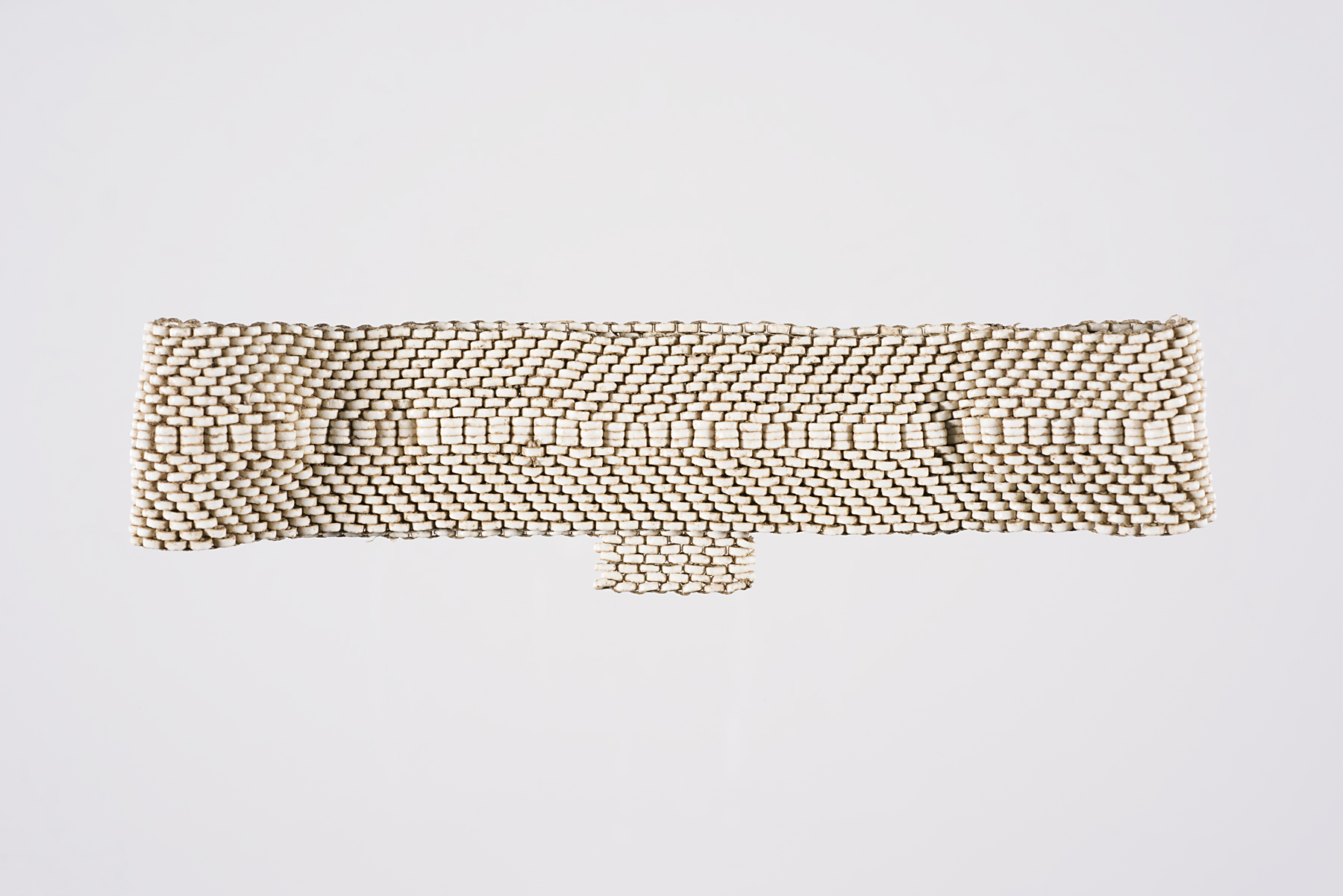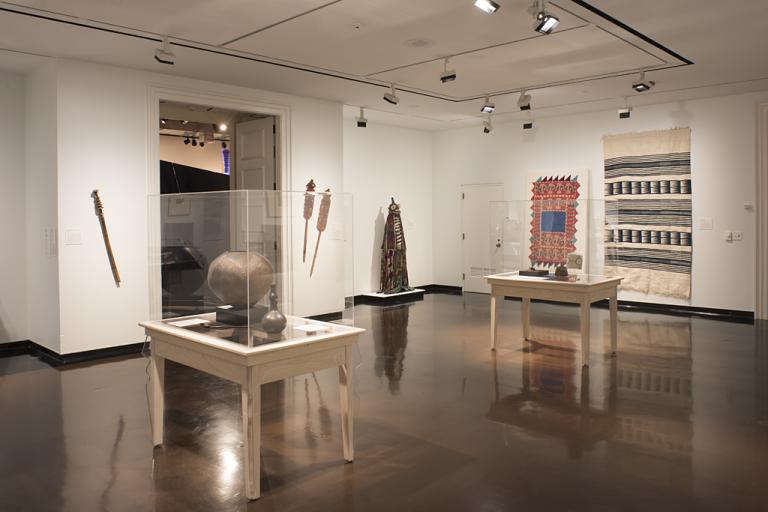headband, unrecorded Khoisan artist
Artwork Overview
unrecorded Khoisan artist, artist
headband,
circa 1980
Where object was made: Botswana
Material/technique: cotton string; ostrich egg shell beads
Dimensions:
Object Height/Width (Height x Width): 6 x 24.5 cm flat
Object Height/Width (Height x Width): 2 3/8 x 9 5/8 in
Object Height/Width (Height x Width): 6 x 24.5 cm flat
Object Height/Width (Height x Width): 2 3/8 x 9 5/8 in
Credit line: Gift of Reinhild Janzen
Accession number: 2017.0068
Not on display
If you wish to reproduce this image, please submit an image request




